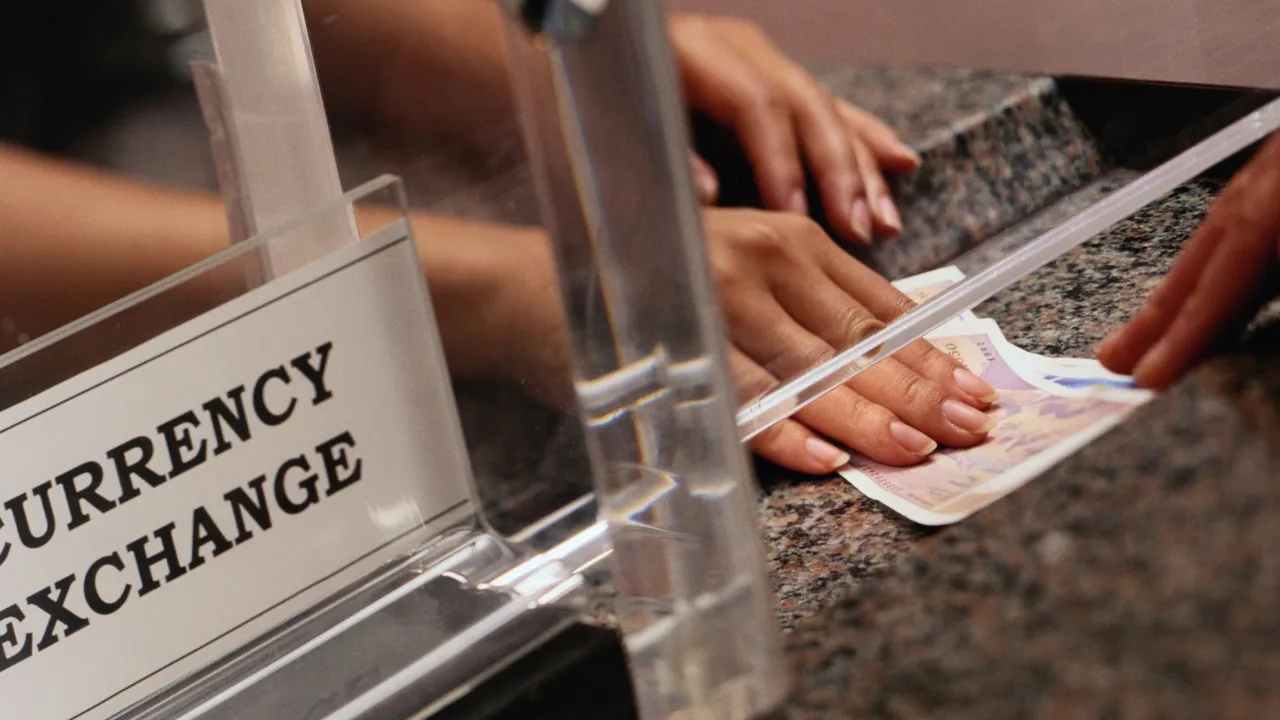Currency Exchange Tips
Navigate currency exchange with confidence. This article provides essential tips for getting the best exchange rates and avoiding hidden fees when converting currencies. Maximize your spending power abroad.

Understanding Currency Exchange Basics for Digital Nomads
Hey fellow digital nomads! Let's talk about something that can seriously impact your travel budget: currency exchange. It's not as simple as just swapping dollars for Baht or Euros. There are fees, rates, and scams to navigate. This guide is all about arming you with the knowledge you need to get the best bang for your buck (literally!) when exchanging currency.
Decoding Exchange Rates Real Exchange Rates
First things first, let's understand what an exchange rate actually is. It's the value of one currency in relation to another. You'll see two main types of rates: the \"mid-market rate\" (also known as the interbank rate or real exchange rate) and the rate you'll actually get when you exchange money. The mid-market rate is the *real* exchange rate, the one banks use when trading with each other. You can find this rate on Google, XE.com, or Reuters. The rate you get from a bank, exchange bureau, or even an ATM will *always* be worse than the mid-market rate. The difference is how they make their profit.
Where to Exchange Currency Best Exchange Locations
So, where should you exchange your money? Here's a breakdown of your options, from best to worst (in most cases):
- ATMs (Local Bank ATMs Preferred): Using your debit card at a local bank ATM often gives you a decent exchange rate, usually close to the mid-market rate, plus a small transaction fee. Always choose to be charged in the local currency.
- Online Currency Exchange Services (Wise, Revolut): These platforms offer very competitive exchange rates and low fees. You can often transfer money directly to a local bank account or use a debit card to withdraw cash.
- Credit Cards (with No Foreign Transaction Fees): Using a credit card with no foreign transaction fees can be a good option for purchases, as you'll typically get a decent exchange rate. However, avoid cash advances, as they come with high fees and interest.
- Local Banks: Banks in the country you're visiting can offer reasonable exchange rates, but they often have longer lines and require you to be a customer.
- Currency Exchange Bureaus (Travelex, etc.): These are convenient, but they usually offer the worst exchange rates and charge high fees. Avoid them if possible, especially at airports and tourist areas.
- Hotels: Terrible rates. Just don't.
Essential Currency Exchange Tips for Travelers and Digital Nomads
Okay, now for the nitty-gritty. Here are some essential tips to keep in mind:
- Avoid Airport Exchanges: The exchange rates at airports are notoriously bad. Wait until you get into the city to exchange your money or, better yet, use an ATM.
- Know the Mid-Market Rate: Check the mid-market rate before you exchange money so you know what a fair rate should be.
- Compare Rates: Don't just go to the first exchange bureau you see. Compare rates at a few different locations to find the best deal.
- Ask About Fees: Always ask about all fees before you exchange money. Some places charge hidden fees that can eat into your budget. Ask \"What is the total amount I will receive after all fees?\"
- Pay in Local Currency: When using your credit card or debit card, always choose to pay in the local currency. If you choose to pay in your home currency, the merchant will set the exchange rate, which is usually worse than what your bank would offer. This is called Dynamic Currency Conversion (DCC) and it's a ripoff.
- Use a Credit Card with No Foreign Transaction Fees: Many credit cards charge a fee (usually 1-3%) for purchases made in foreign currencies. Get a card with no foreign transaction fees to save money.
- Carry Some Cash: While it's convenient to use cards, it's always a good idea to carry some cash for small purchases, tips, and emergencies.
- Be Aware of Scams: Be wary of people offering to exchange money on the street. They may be scammers.
- Use a Money Belt or Secure Wallet: Protect your money from theft by using a money belt or secure wallet.
- Notify Your Bank: Let your bank know your travel dates so they don't block your card for suspicious activity.
Recommended Currency Exchange Platforms and Products Online Currency Exchange
Here are a few online platforms that are popular among digital nomads:
Wise (formerly TransferWise) Wise Currency Exchange
Description: Wise is a popular platform for international money transfers and currency exchange. They offer very competitive exchange rates and low fees. You can send money to a local bank account or use their multi-currency account to hold and spend money in different currencies.
Use Case: Transferring money from your US bank account to a Thai bank account, or withdrawing cash from an ATM in Europe using your Wise debit card.
Pros: Excellent exchange rates, low fees, transparent pricing, multi-currency account.
Cons: Can take a few days for transfers to complete, some countries may not be supported.
Pricing: Fees vary depending on the currency and amount, but they are typically lower than traditional banks.
Revolut Revolut Currency Exchange
Description: Revolut is a financial app that offers a range of services, including currency exchange, international money transfers, and cryptocurrency trading. They offer competitive exchange rates and allow you to hold and spend money in multiple currencies.
Use Case: Exchanging USD to EUR for a weekend trip to Paris, or sending money to a friend in Australia.
Pros: Competitive exchange rates, multi-currency account, budgeting tools, cryptocurrency trading.
Cons: Free plan has some limitations, some features require a paid subscription.
Pricing: Offers a free plan with limited features, and paid plans with more benefits.
N26 N26 Currency Exchange
Description: N26 is a German mobile bank that offers a range of banking services, including currency exchange and international money transfers. They offer competitive exchange rates and a transparent fee structure.
Use Case: Managing your finances while traveling in Europe, withdrawing cash from ATMs in different countries.
Pros: User-friendly app, free ATM withdrawals in the Eurozone, transparent fees.
Cons: Not available in all countries, some features require a paid subscription.
Pricing: Offers a free plan with limited features, and paid plans with more benefits.
Comparing Travel Credit Cards with No Foreign Transaction Fees Best Travel Credit Cards
Choosing the right credit card can save you a lot of money on foreign transactions. Here are a few top contenders for US-based digital nomads:
Chase Sapphire Preferred Card Chase Sapphire Preferred Benefits
Description: A popular travel credit card that earns valuable Chase Ultimate Rewards points, which can be redeemed for travel, cash back, or gift cards. It has no foreign transaction fees.
Use Case: Earning points on travel and dining purchases, redeeming points for flights and hotels.
Pros: Generous sign-up bonus, earn 2x points on travel and dining, no foreign transaction fees.
Cons: Annual fee.
Pricing: Annual fee of $95.
Capital One Venture Rewards Credit Card Capital One Venture Rewards
Description: A simple and straightforward travel credit card that earns miles on every purchase. Miles can be redeemed for travel, cash back, or statement credits. It has no foreign transaction fees.
Use Case: Earning miles on all purchases, redeeming miles for travel expenses.
Pros: Earn unlimited miles on all purchases, no foreign transaction fees.
Cons: Annual fee.
Pricing: Annual fee of $95.
Discover it Miles Card Discover it Miles Benefits
Description: A travel credit card that earns miles on every purchase and matches all the miles you've earned at the end of your first year. It has no foreign transaction fees.
Use Case: Earning miles on all purchases, getting a mile-for-mile match at the end of the first year.
Pros: Mile-for-mile match in the first year, no foreign transaction fees, no annual fee.
Cons: Rewards program is less flexible than some other travel cards.
Pricing: No annual fee.
ATM Strategies Minimizing ATM Fees
ATMs can be a convenient way to get cash, but they can also come with fees. Here's how to minimize ATM fees:
- Use Local Bank ATMs: ATMs operated by local banks usually have lower fees than ATMs operated by private companies.
- Withdraw Larger Amounts: Withdraw larger amounts of cash less frequently to reduce the number of transaction fees.
- Check for Network Partnerships: Some banks have partnerships with banks in other countries, allowing you to withdraw cash without fees.
- Consider a Travel-Friendly Bank Account: Some bank accounts are designed for travelers and offer fee-free ATM withdrawals worldwide. Charles Schwab High Yield Investor Checking Account, for example, reimburses all ATM fees worldwide.
Understanding Dynamic Currency Conversion (DCC) DCC Avoidance
Remember DCC? It's a sneaky trick merchants use to try to get you to pay in your home currency instead of the local currency. Always, always, *always* choose to pay in the local currency. If you choose to pay in your home currency, the merchant will set the exchange rate, which is almost always worse than what your bank would offer. It's a guaranteed way to lose money.
Staying Safe Handling Cash Safe Cash Handling
Traveling with cash can be risky, so it's important to take precautions:
- Use a Money Belt or Secure Wallet: Keep your cash hidden and secure.
- Don't Flash Your Cash: Avoid displaying large amounts of cash in public.
- Be Aware of Your Surroundings: Pay attention to your surroundings and be aware of potential scams.
- Split Up Your Cash: Don't keep all your cash in one place. Split it up and store it in different locations.
Planning Ahead Planning for Currency Exchange
The best way to avoid currency exchange headaches is to plan ahead. Research exchange rates, compare fees, and choose the best options for your needs. With a little preparation, you can save money and enjoy your digital nomad adventures without worrying about currency exchange woes.
:max_bytes(150000):strip_icc()/277019-baked-pork-chops-with-cream-of-mushroom-soup-DDMFS-beauty-4x3-BG-7505-5762b731cf30447d9cbbbbbf387beafa.jpg)






